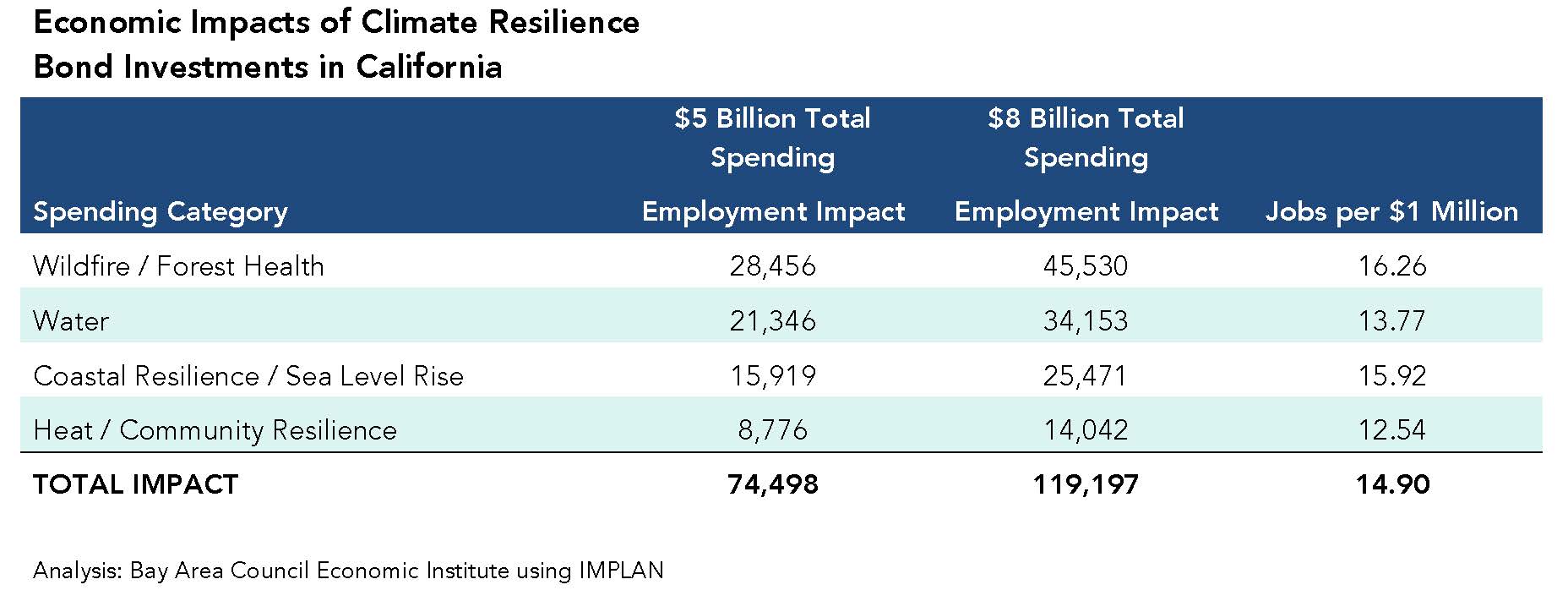Linking the Environment and the Economy
Executive Summary
In the last few years, drought, wildfire, and extreme heat events have had significant impacts on California, and sea level rise is a looming threat for coastal communities. Given an urgency to limit the state’s exposure to climate change, multiple bond proposals have been put forward that would significantly expand the state’s ability to make investments in climate resilience.
While the environmental benefits of these types of investments are well understood, the economic impacts are not. And with nearly 4 million Californians filing for unemployment benefits in the last seven weeks, there is also an immediate need for the state to make policy decisions and investments that catalyze job creation.
This study finds that climate resilience investments do provide significant employment and economic stimulus. A package of climate resilience expenditures in California can support nearly 120,000 full-time equivalent jobs under an $8 billion spending program, or nearly 75,000 jobs under a smaller $5 billion package. These jobs include positions across the wage spectrum, from middle-wage roles such as construction equipment operators, truck drivers, cleanup laborers, and landscapers, to more technical positions in environmental consulting, engineering, and scientific research.
Across all four climate resilience spending categories analyzed—wildfire/forest health, water, coastal resilience/sea level rise, and extreme heat/community resilience—between 12.54 and 16.26 full-time equivalent job-years are produced from $1 million in spending in each category. These numbers are consistent with findings from similar studies that have analyzed the economic impacts of projects such as road and bridge construction, smart grid installation, and building retrofits for energy efficiency.
Investments in these climate resilience categories also have the potential to save billions of dollars in the long term by preventing or reducing the magnitude of damage that climate-induced natural disasters will cause. As one example of a suite of multi-benefit projects, this study finds that restoration programs along San Francisco Bay can create between 3,300 and 6,600 jobs, in addition to improving quality of life for residents, restoring natural ecological functions, and protecting the region’s communities from sea level rise.
Report findings are based on publicly available climate resilience expenditure proposals from the California State Senate, Assembly, and Administration as of the date of publication.
